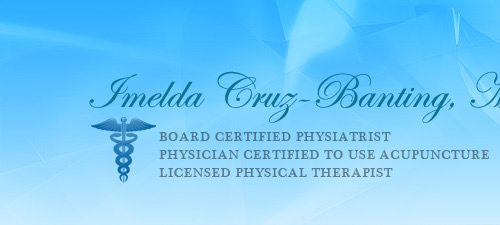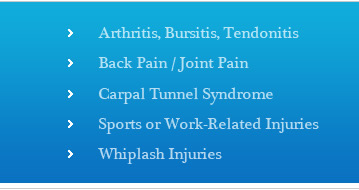INCREASING AWARENESS ABOUT PROGERIA
Imelda Cruz-Banting, M.D., F.A.A.P.M.R., P.T.
Because of its rarity, I am sure that not too many people have heard of the condition Progeria. It is a very uncommon syndrome (condition involving multiple bodily systems) affecting one in every four million children. Not only is this disease rare, but it is also fatal, as the affected person ages very prematurely and excessively fast. One year of life with Progeria is equivalent to about seven to eight years of normal aging, so an eight year old child with this condition actually possesses the physical appearance and physiological functioning, especially that of the cardiovascular system, of a fifty six year old.
The different parts of the body that manifest rapid aging are the skin (including its appendages such as the hair and nails), the bones, the ears/hearing, and the blood vessels of the heart and brain. When they are born, children with Progeria look like any normal babies, with no obvious signs of aging. But around one and a half years, they start showing changes not usually found in toddlers. The veins on the forehead/scalp and abdomen suddenly become very prominent, lips can appear bluish, and their skin covered with a mixture of over or under pigmentation. They start losing their hair but with distinctive preservation of the mid scalp. They also experience loss of their eyebrows and eyelashes. Their growth is stunted at a certain point and they start losing weight incessantly. They are usually lagging behind their peers by 3-4 years in height and the average weight of the known affected children is about 10.6 kilograms only.
Most Progeria patients share many common physical characteristics that make them easy to distinguish from other syndromes. Their skin becomes extremely wrinkly, dry, thick and tight. Their eyes also suffer from severe dryness necessitating the use of “artificial eye drops.” Their bones become osteoporotic or brittle making them prone to fractures. Aside from that, they also have bony abnormalities and deformities such as big heads coupled with narrow jaws and small chins, so their teeth tend to crowd and overlap in their small mouths. Their noses get thin and usually with a beak-like deformity. The ends of their fingers somehow get fixed at a bent position with shortened nails. Their shoulders are very narrow, and hips are deformed resulting in bow-leggedness. Very early on, they develop arthritis with complaints of joint pains making activities of daily living like walking and enjoying sports more difficult. Their voices are characteristically high pitched and shrill (I believe an advantage if they love to sing because this enables them reach the highest notes). Lastly, their hearing diminishes just like our grandparents’, sometimes even requiring them to use hearing aids.
The most common causes of deaths among Progeria kids are either heart attack (myocardial infarction) or brain attack (stroke/cardiovascular accident). These are brought about by the hardening (atherosclerosis) of the blood vessels that bring oxygen to the heart and brain tissues. They become so stiff to the point at which the heart and brain are no longer able to receive oxygen, causing all functions to cease. On average, the life span of a child with Progeria is between 13 and15 years old.
It seems like every organ gets old too fast, but this is certainly not the case with their intellect. God has blessed these kids with normal thinking appropriate to their chronological age. They are able to attend regular school, achieve high marks, establish friendship, and even have colorful love lives. Their emotions are just as similar to the kids their age. They can feel sad, happy, angry, ecstatic, depressed or hopeful. Just like other kids, the girls love to accessorize to look pretty and fashionable, and the boys groom up to appear handsome to their crushes.
So, what really went wrong with them? Through the leadership of Dr. Leslie Gordon and several other doctors, and their unparalleled dedication of several years of studies, the genetic mutation that leads to the development of this syndrome has been found. It is the PROGERIN, a defective structural nuclear membrane protein, that causes the collapse of the nucleus, that essentially leads to cellular death/dysfunction. Progerin is present in almost all cell types in the body, which is the reason why different body systems/functions are affected. This gene mutation is something not inherited or familial, but rather sporadic, meaning that it happens randomly, although the risk of having another child with Progeria increases slightly.
Knowing the earliest symptoms of Progeria is very important, as it will aid medical treatment geared towards extending the lifespan of these Progeria children by at least 1.6 years. The Progeria Research Foundation at Boston, MA, joined by other hospitals/learning institutions (Hasbro Children’s Hospital, Dana-Farber Cancer Institute, Beth Israel Deaconess Medical Center, Harvard Medical School, Warren Alpert Medical School of Brown University) has proven the positive effects of the medicine Lonafarnib, of the farnesyltransferase inhibitor group, and Everolimus (an antineoplastic chemotherapy medicine) in slowing down or retarding the rate of the aging process especially in the areas of weight gain and cardiovascular system. Further studies, especially the Everolimus, will be necessary to potentiate the effects of these medications, which can also possibly be used as one of the anti-aging treatments for regular adults. Wouldn't that be exciting?
Our foundation has partnered with Progeria Research Foundation in trying to locate possibly 150 more Progeria children around the world. From the Philippines, Kim (13), Jess (12) and Nezha (6) (siblings), and Osang (8), our honorary angels, are able to avail of this medication which can add at least a couple of years to their lives. (The first ever Filipino child officially diagnosed with progeria, Rochelle, had her life prolonged up to 18 years with the help of Lonafarnib, until she succumbed to the cardiovascular complications of the advanced aging. Our president Jojo Sayson, and yours truly, accompany these tiny blessed angels to Boston Children's Hospital when they come to the USA. Every two years, they have to come back to Boston for re-evaluation and documentation of the effects of the trial medications (Lorafarnib and Everolimus) on their condition. We are encouraging you to help spread awareness about Progeria to enable these kids benefit from these medications through the generosity of PRF and its donors.
Download printable PDF
SAFE TRAVELS
Imelda Cruz-Banting, M.D., F.A.A.P.M.R., P.T.
Diplomate, American Academy of Physical Medicine & Rehabilitation
When we think of travel, the first thing that comes to our minds is the enjoyment that goes along with it, especially if the destination is somewhere in the beach, mountains, or more excitingly, on an exclusive island! In the summertime, it is almost a must that families plan a trip out of state. Most of the time, this usually entails a long drive or a plane ride. The majority of people choose to travel by land than by air for obvious economic reasons. Unfortunately though, it is not a common notion that accidents occur more often via land than air travels, and are accompanied by high mortality rates. This article is not meant to scare land travelers, but is more to educate on the avoidable accidents and the injuries sustained from such mishaps.
As a specialist of Physical Medicine and Rehabilitation (a.k.a. Physiatry), there are a few MVA injuries that I commonly encounter. First on the list are the traumatic brain injuries (TBIs). Survivors often suffer from many disabilities which often leave them handicapped and dependent on others. The neurocognitive deficits these patients suffer from render them less functional and unemployable at the worst. In addition, spinal cord injuries also result in drastically severe disabilities. If it affects the patient’s cervical (neck) spine, he may end up with quadriparesis (paralysis from the neck down). If it affects the thoracic (midback) spine or lumbar (lower back) spine, patients may end up with paraparesis or paralysis from the waist down. The extent of the paralysis or weakness depends on the level and severity of the injuries. If brought immediately within the critical window period, the disability decreases accordingly. This is the reason why it is very crucial that these victims be driven or flown immediately to the nearest trauma center. The rehabilitation after the immediate management/surgeries requires a multidisciplinary approach to reduce morbidity from the physical and psychological problems attendant with the injury, which often cost millions to billions of dollars.
Fractures are not uncommon in MVAs especially if the impact is so heavy causing the patients’ bodies to hit the hard immobile parts of the vehicle. All patients sustaining high energy blunt injuries are assessed to have a pelvic trauma until proven otherwise. For extremity injuries, the long bones have to be stabilized as early as possible to prevent further complications. Due to their need to remain in bed for a long time, these patients are prone to developing blood clots (DVT or deep vein thrombosis). Blood clots can embolize (become dislodged) to either the lungs or brain and can be the immediate cause of death for these patients. However, this is prevented by carefully titrated blood thinners. Another way to prevent this is early mobilization through physiotherapy, thereby facilitating the patients’ return to their prior level of function.
In cases of sudden acceleration/deceleration injuries, the patients usually present symptoms compatible with sprain/strain and contusion of the spine, the extremities, and the chest or ribcage. The knees usually hit the dashboard, while the shoulders bang against the doors or the partitions. The neck commonly sustains whiplash injuries from the repetitive forward and backward movements of the head upon the sudden stop. The same mechanisms impact the mid and lower back which oftentimes lead to herniated discs. If the head is shaken vigorously or hits the airbag that deployed, patients can suffer from concussive symptoms such as headaches, dizziness, nausea/vomiting, photophobia (light being bothersome), balance disturbance, and even transient amnesia.
After being discharged from the emergency room, the above mentioned patients are subsequently referred for physical rehabilitation. Magnetic resonance imaging (MRI) studies are considered when herniated discs or soft tissue injuries in the spinal column and intraparenchymal pathology (especially bleeding) in the head are suspected, which are often hinted at by the patient’s persistent neurological complaints. Repeated X-rays or CT scans are recommended if occult (not easily detected) fractures are a possibility. If no contraindications are determined, the patients are started on conservative treatments such as physical/occupational/speech therapy, acupuncture, chiropractic treatments, along with pain/anti-inflammatory medications and muscle relaxants. After a few weeks, the patients are re-evaluated and if the conditions do not improve considerably, further studies may be ordered. Electromyographic studies (nerve and muscle tests) are the gold standard in localizing and quantifying a presumed “pinched nerve,” for which patient may benefit from epidural injections or nerve blocks for better pain control.
Steroid injection to the affected joints (usually the shoulder, knee, hip, and ankle) are given if the ultrasound shows any internal derangement (partial tears, inflammation of tendons, bursitis, joint effusion). For failed injections to the spine, the patients are then referred for necessary surgical evaluation. The real indications for surgical intervention are strictly as follows: severe disabling pain affecting the patient’s daily activities and functions specifically the ability to gainfully work, severe weakness or paralysis of muscles, severe numbness or inability to feel imposing danger of getting burned or cut unknowingly, and loss of control of the bladder or bowel. Without enough attention, about 25% of these patients easily develop psychological disturbances such as nightmares, phobias of going out, and suffer from post traumatic stress disorder (PTSD).
Protective devices are continuously being developed and redesigned in automobiles to help decrease the alarming increase in the morbidity and mortality rates related to MVAs. Airbags provide a decrease in fatality of about 30% in purely frontal accidents and a decreased risk of death of about 11% in all types of crashes. As the adage goes, “an ounce of prevention is better than a pound of cure.” It is therefore a prerequisite that before heading the road, we must check our automobiles to stave off accidents. Adhering to the traffic rules, specifically not going beyond the speed limit (specially the very young drivers), deserves the highest emphasis. Driving under the influence of alcohol cannot be underemphasized as it hurts not just yourself, but all passengers involved. Postponing or cancelling a trip during bad weather conditions will definitely save lives. Just keep in mind that you are going out on a trip to enjoy and have fun, not to end up in an emergency room. As most believers do, let us not forget to implore the divine protection of our Creator to keep us away from danger. And if we just carefully follow these precautions, everybody can surely enjoy their trips as enthusiastically planned.
Download printable PDF
PERFORMING ARTS…. their INJURIES
Imelda Cruz-Banting, M.D., P.T.
Fellow, American Academy of Physical Medicine & Rehabilitation
Physician Certified to Use Acupuncture
Licensed Physical Therapist
When we watch these musicians, dancers, and other artists perform on stage, we are all left in awe after their spectacular numbers. What we actually see are the finished products of considerably painstaking hours of practice to reach perfection. But what do these dedicated professionals/amateurs actually endure just to offer their audiences unforgettably resplendent entertainment?
String musicians, pianists, and wind players oftentimes suffer from overuse injuries such as tendonitis, ligamentous sprains or muscle strains, nerve entrapments (ulnar nerve from sustained excessive elbow bending; median nerve at the wrist, a.k.a. carpal tunnel syndrome), neck and shoulder pain, thoracic outlet syndrome (where nerves and/or blood vessels get pinched at the collar bone area), and focal dystonia (sustained muscle contraction causing twisting and repetitive movements or absurd posture).
Dancers on the other hand are very flexible allowing them to engineer dynamically vivacious moves. But unfortunately, these extreme stretching, twisting, and jumping acrobatics predispose them to musculoskeletal and orthopedic injuries of the lower extremities, usually the foot, ankle, hip and knees.
For professional performers, just like athletes, they opt to continue their acts despite their pain, numbness, swelling, incoordination, because their careers support them financially. The incorrect posture, excessive force, stress, non-ergonomic technique, lack of rest are the major factors leading to disabling pain, and if not addressed, to the end of their careers. Thinking that they are not actually injured since they only feel aches, these artists don’t seem to adhere to the advice of reducing or stopping playing for their injuries to heal.
With soft tissue injuries, healing unfortunately takes a long time. Even after resting for some time, the symptoms can immediately reappear as soon as the activity is resumed. The dictum “never to perform beyond pain” should be strictly observed all the time. Generally musicians need to decrease force, maintain posture wherein joints are in the midrange of motion, recruit larger muscle groups if able, and diminish fixed, tensed positions.
In physical rehabilitation, they can be taught numerous self help techniques such as warming up before and cooling down after every performance, stretching and relaxing during break periods, adjusting techniques in playing and dancing, and modifying foot gear, string tension or reed selection. If symptoms do not improve within a few weeks, further professional help is necessary.
Medical treatments such as injection with Botox or sedating agents help relax dystonic muscles. In more advanced cases, diagnostic studies will aid in planning other treatment options. These include electrodiagnostic study (EMG/NCS) to check the extent of nerve entrapment and diagnostic musculoskeletal ultrasound for tendonitis or ligamentous sprain. MRIs are indicated for other structural abnormalities (muscle herniation) and thermography if suspecting abnormalities in blood flow associated with weather sensitivity.
With advances in medicine, treatment options are available in an outpatient setting. Prolotherapy is a special injection that allows ligaments to regrow. Percutaneous tenotomy is a procedure that reattaches tendons. Medications are also available to reduce inflammation and improve blood flow. Physical therapy and occupational therapy are quite helpful as well. For cases that fail to respond to conservative treatment, surgery may be the last resort. But if the performing artists cautiously follow the aforementioned tips, they can definitely continue to enjoy their God-given talents as long as their hearts desire.
Download printable PDF
CANCER REHABILITATION
Imelda Cruz-Banting, M.D., F.A.A.P.M.R., P.T.
Fellow, American Academy of Physical Medicine & Rehabilitation
Rehabilitation for cancer patients? What does this really mean? The word rehabilitation comes from the Latin prefix “re,” meaning “again” and “habitare,” meaning “make fit.” When something falls into disrepair and needs to be restored to a better condition, it needs rehabilitation. So how does this relate to cancer?
With the medical advances, through God’s grace and favor, a lot of cancer patients nowadays get prompt treatments that make them cancer-free. But true with most treatment modalities available though, they are not without any flaws. In fact, these therapeutic treatments are usually double-edged. From tumor removal, followed by either chemotherapy and/or radiation, cancer survivors can be left with some residual dysfunction. After surgeries, they can develop deformities (e.g. breast removal), paralysis/weakness of muscles as a result of peripheral neuropathy due to radiation/chemotherapy, swallowing and speech difficulties if nerves get accidentally hit or cut during surgeries (e.g. neck or brain tumor removal). Deconditioning can ensue from prolonged bed rest especially if not allowed to move or get out of bed for an extended period (e.g. lower extremity cancer surgery/amputation). Bleeding tendencies/easy bruising can follow Vitamin K deficiency from prolonged treatment with antibiotics (e.g. gastrointestinal tumors).
Patients can also develop LFA, “learned food aversion,” to meats, vegetables, and caffeinated beverages during their cancer treatment. The exact mechanism for this is unknown. If not properly and immediately addressed, it can lead to weight loss, malnutrition, dehydration, and weakness. And these can cascade into immunosuppression (decreased or loss of ability to fight infection) making them more susceptible to opportunistic infections (from microorganisms that can be easily be defended against by normal bodies but not by severely ill patients), which can lead to pneumonia or sepsis (infection in the blood affecting the whole body systems) eventually causing death. Weakness can also make them more prone to injuries like falling which can lead to fractures, spinal cord injuries or head trauma. All these will definitely make their condition and prognosis worse and recovery much slower and longer.
Commonly ignored in cancer treatment plan is the potential for sexual alteration or dysfunction. Surgeries like mastectomy (breast removal), prostate cancer surgery, ovarian/uterine surgery, to mention a few, leave these men and women with a profound negative impact. They develop either self-pity, anger or depression if they are not able to satisfy their partners or if they lose their capability to reproduce. Psychologically, if they are parents, they also eventually affect the whole family as they can project their negative feelings to the innocent children or even to the people at work, if they’re still able. Same is true with tumors that affect the behavior of the patients, such as those with brain tumors.
Pain is the number one problem in the majority of patients with cancer. Pain can be undertreated or overtreated. Non-opiod analgesics like NSAID’s (non-steroidal anti-inflammatory medications such as Ibuprofen/Naprosyn/Advil/Motrin) are associated with ceiling effects for pain relief. If the maximum dosage is exceeded, it can result to organ toxicity producing kidney failure. We do not want these patients to end up in dialysis to add up to the sufferings they already undergo with their cancer. But use of opioid analgesics also has its own risk, i.e. “addiction.” Thankfully, this is an infrequent problem and is usually managed by changing the dosage or the agent. If not monitored though in some cases, overdosing with opiods can lead to respiratory depression (causing patient to cease breathing) and unexpected death.
So how do we manage all these complications related to cancer or cancer treatment? The rehabilitation team headed by a physiatrist (physical medicine and rehabilitation specialist) is usually consulted by different specialists taking care of cancer patients. The team consists of the nurse, physical therapist, occupational therapist, recreational therapist, social worker, psychologist/psychiatrist, pharmacist, dietitian, chaplain, speech-language pathologist, and prosthetist/orthotist. Each has a role unique to his profession, but the common goal and bottom line of the intervention is to give the patient the quality of life they deserve. Getting patients back on their feet, to be able to work again or do household chores, enjoy their favorite hobbies, reconnect with their friends, feel their capacity to be productive again are the ultimate outcome that the team and the patient aim for.
The registered dietitian or nutritionist computes the caloric intake depending on the type and extent of the tumor. Speech therapists address and manage the problem of swallowing and speech difficulties. Parenteral nutrition (feeding aside from the oral route, using IV or tubes) can be inevitable in some patients with gastrointestinal tumors and severe vomiting as late effects of chemotherapy. The physical therapist assesses the mobility issues such as the transfers and gait/ambulation and recommends use of appropriate gait aids such as walkers, crutches, canes, wheelchair, etc. They help restore the physical abilities through modalities and therapeutic exercises. The control of pain, in addition to medications, is facilitated by use of various physical and electrical means.
The occupational therapist assesses the patients’ capacities to care for themselves. He or she retrains them with use of appropriate adaptive aids and also designs splints/upper extremity braces needed for activities of daily living such as feeding, dressing/grooming, hygiene, etc. Together with the psychologists and speech therapists, they provide functional, cognitive, and safety evaluation. Psychologists help in patients and families/caregivers on how to adjust to the high-stress situation, how to avoid anger and other improper responses. The pharmacist provides input into the medication options and helps educate the patient and family on drug side effects.
The rehabilitation nurse helps assess patient care and facilitates the coordination of services, provides education regarding the disease and helps with discharge planning. She/he monitors health maintenance such as skin care, as most of the patients develop skin ulcerations/bedsores from prolonged bedrest. The chaplain is definitely included in the rehabilitation team as the emotional and religious supporter. He helps the team focus on the quality of life issues, euthanasia (mercy killing) and proper role of medical intervention in the terminally ill patient. The recreational therapist helps with community reintegration, avocational activities (usually musical), self esteem, and functional tasks. The social worker evaluates the psychosocial factors, including family support, financial resources, and patient and family expectations. He/she makes sure the patient gets discharged to the appropriate place with available community resources. Some patients after amputation may need an artificial limb or special braces to be able to move around and do self care, thus a prosthetist/orthotist is very essential to the team.
The physiatrist evaluates the medical rehabilitation issues and assists with diagnosis and management. Rehabilitation issues can include neurogenic bladder (unable to hold or initiate urination) and bowel management, pain control, prosthetic and orthotic fitting, and management of spasticity (increased muscle stiffness and tightness usually resulting from brain or spinal cord lesions) and weakness. Physiatrists are skilled interdisciplinary team leaders and can assist with the bridging between rehabilitation efforts and medical issues.
It is not unknown to many the hardships: physical, mental, emotional, and financial, being experienced by the cancer patients and their families. The help that can be extended to them will obviously take a heavy load off of their shoulders. The quality of life after surviving cancer or during cancer treatment is the ultimate goal that each and every rehabilitation team member has to focus on. Not to forget though is the importance of educating the people on how to avoid getting cancer, (thanks to the vast amount of information available in the social media), except when there is a very strong genetic predisposition. Early detection of beginning signs and symptoms is next to nothing. And definitely one valuable thing that we all should keep in mind is to ask our Creator for his divine intervention should all these medical/surgical treatments go in vain. And if everything else fails, we still can call to Him to be able to accept His will with open hearts and minds. People sometimes lose faith and hope when things go awry. Therefore, it is advisable to always turn to Him who has the answer to what seems to be inexplicable to the human level of understanding.
* Braddom, Physical Medicine & Rehabilitation 1996
Download printable PDF
|















